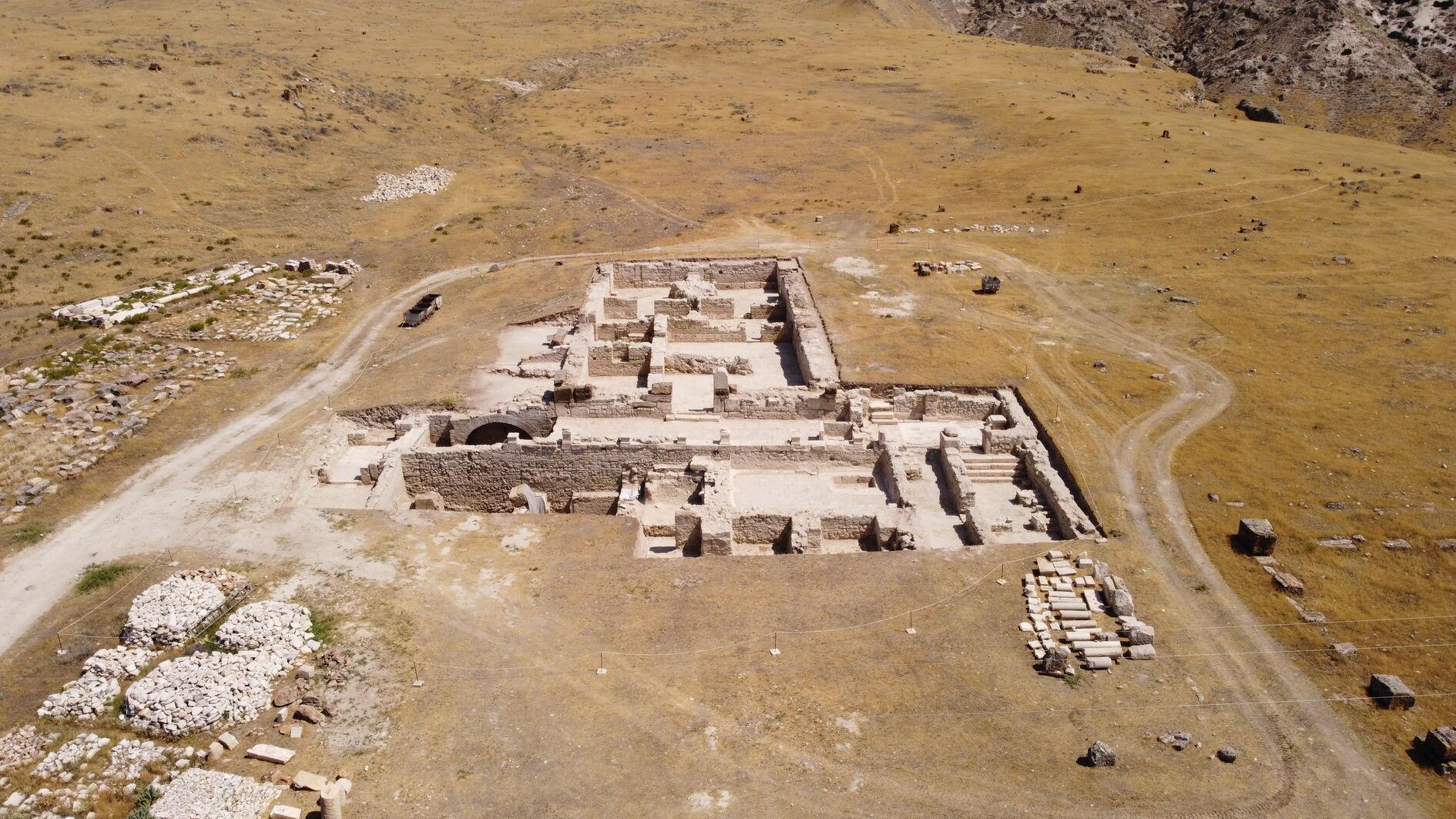
Ongoing excavations in the ancient city of Tripolis, located in the Buldan district of the western province of Denizli, have brought to light a lavish Roman villa believed to have hosted the elite of the city, complete with colorful wall frescoes and a 40-square-meter fishpond at its entrance.
The villa, spread across a 1,500-square-meter area included four rooms, two grand halls, a colonnaded courtyard and gardens, was unearthed by a team led by Professor Bahadır Duman of Pamukkale University’s Archaeology Department, as part of the excavations underway for the past 13 years under the Turkish Culture and Tourism Ministry’s “Heritage for the Future” project.
The structure, situated near the Büyük Menderes River in the Yenicekent neighborhood, stands out not only for its scale but also for its architectural details and decorative elements — features that distinguish it from other residential buildings uncovered at the site.
“This is not an ordinary house,” said Duman. “With its impressive architectural design, vibrant wall frescoes, and unique elements like the fishpond, we believe this building was a residence of a high-status individual.”
He noted that the interior walls of the villa are adorned with a wide palette of frescoes, ranging from yellow and blue to deep red and brown tones, often incorporating floral motifs and geometric patterns.
One of the villa’s most remarkable features is a colonnaded gallery leading to the fishpond, which is believed to have been used to raise various freshwater species for both display and consumption.
A rare inland fishpond
Duman emphasized the rarity of such a fishpond in the Anatolian interior, explaining that while similar examples are known from coastal Roman villas, this discovery, located far from the sea, is particularly significant.
“We found traces of freshwater fish such as carp, catfish and eel, and the pond itself features terracotta piping along its walls, some partially sealed to create shaded hiding places for the fish,” he explained. “The presence of marine shells around the pond area and fish motifs in the marble flooring confirm its function.”
According to Duman, the fish raised in the pond were likely served to prominent guests hosted at the villa. “In Roman culture, fishponds served both practical and symbolic roles. They reflected wealth and status and were often located near grand reception halls to impress visitors.”
Previous finds at Tripolis include a 12-room mosaic-floored villa, early board games, Roman granaries, olive oil workshops, monumental fountains and a 1,500-year-old church — making it one of the best-preserved ancient cities in Western Anatolia. The newly unearthed villa adds to this rich archaeological legacy, offering a vivid glimpse into the daily life and social culture of its elite inhabitants.